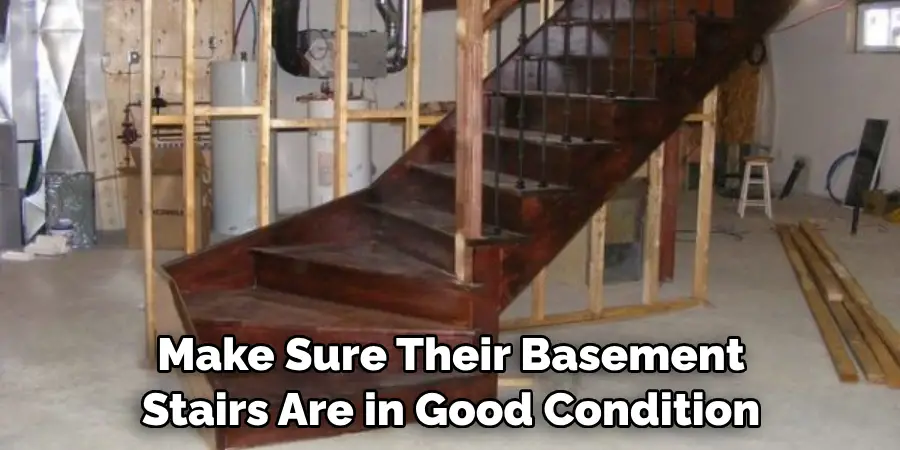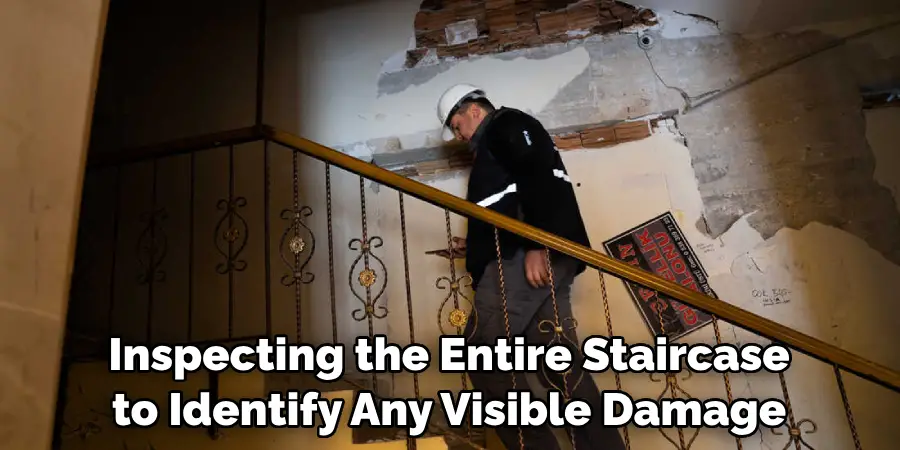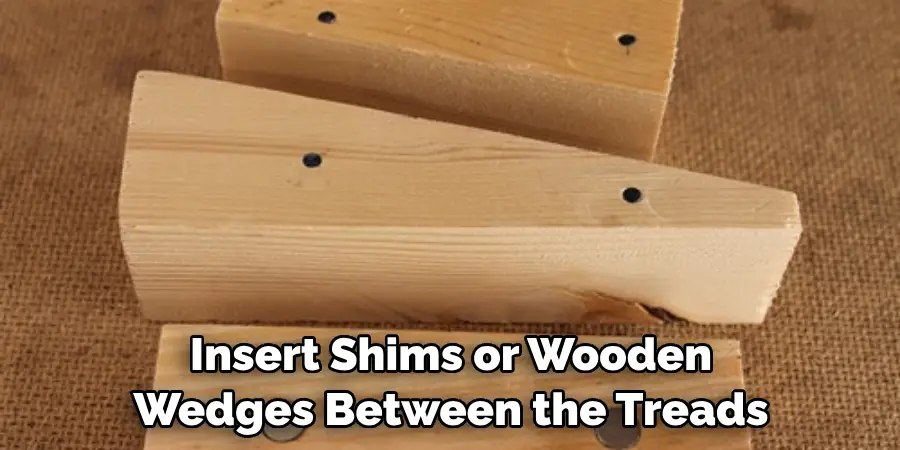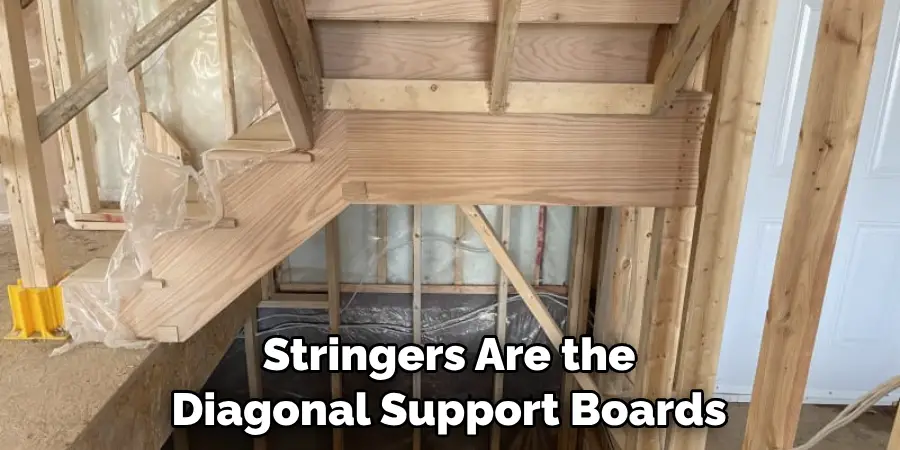Basement stairs are an essential component of any home, providing access to the lower level and serving as a crucial pathway for homeowners and guests. Over time, however, these stairs may experience wear and tear, resulting in various issues such as creaking, loose steps, or even structural damage.

It is important to address these problems promptly to ensure the safety and functionality of your basement stairs. While fixing basement stairs may seem like a daunting task, with the right knowledge and tools, it is possible to restore them to their former stability and reliability.
In this article, we will explore how to fix basement stairs. Whether you are dealing with loose handrails, squeaky treads, or damaged stringers, this guide will provide you with the necessary information to tackle the repairs and enhance the safety and aesthetic appeal of your basement stairs.
Importance of Well-Maintained Basement Stairs
Basement stairs can be an important and necessary part of the home for a variety of reasons. For one, having well-maintained basement stairs can increase the safety of those accessing them. This is especially true if there are small children or elderly family members in the household. When unexpected guests arrive, it’s also important to know that you can easily access the lower level of your home without worrying about slipping or tripping due to faulty stairs.
In addition, having a well-maintained basement stairway increases the overall value of your home since potential buyers will be able to see that it is in good condition. Regular maintenance and repairs will help to keep basement stairs looking their best for years to come.
It is important for homeowners to make sure their basement stairs are in good condition and up to code with local building regulations. This means checking for weak or missing supports, loose screws or nails, cracked boards or splintering wood, and other signs of wear and tear.

It’s also a good idea to inspect the handrails and railings to ensure they are secure. If any of these issues are present, it is important to act quickly and take the necessary steps to make the necessary repairs.
Overview of Common Issues with Basement Stairs
Basement stairs can become damaged or worn with time, leading to a variety of problems that need to be repaired. Some common issues include broken or loose handrails, warped or broken treads, rotting wood, and other structural damage.
If the stairs are in a state of disrepair, it is important to address the problem as soon as possible to avoid further damage and injury. Here we will take a look at some common issues with basement stairs and how to repair them.
Broken Handrails: The first thing you should do is check if your handrail is still securely attached to the wall. If it has become loose over time due to wear and tear, it can be easy for someone to slip and fall down the stairs. To fix this issue, simply tighten up the screws or nails that hold the rail onto the wall until they are tight. You may also need to replace any broken pieces or sections of the rail.
Warped or Broken Treads: If your stairs have warped or broken treads, it is important to address this issue as soon as possible. It can be dangerous for someone to walk on these steps, so you should make sure they are repaired quickly and correctly. The most effective way to fix this issue is to remove the old stair treads and replace them with new ones.
10 Methods How to Fix Basement Stairs
Method 1: Inspecting the Stairs
Begin by thoroughly inspecting the entire staircase to identify any visible damage or issues. Look for signs of rot, cracks, loose steps, or wobbly handrails. Take note of the areas that require attention or repair.

If you find any cracked or broken steps, use a pry bar to remove the damaged sections. From here, measure out and cut replacement pieces of wood to fit the removed sections. Secure the new steps with screws and a drill.
Method 2: Tightening Loose Steps
If you have loose steps, use a screwdriver or drill to tighten the screws or nails securing them to the stringers. Add additional screws or nails if necessary to ensure a secure connection. For added stability, consider using construction adhesive between the steps and the stringers.
If you have an open staircase, it may be necessary to secure the steps from underneath with additional screws or nails. Make sure to fill any holes with wood putty to prevent water damage. It may also be necessary to replace rotted or damaged steps entirely.
Method 3: Repairing Cracked Steps
For cracked steps, start by cleaning the area thoroughly. Fill the cracks with a high-quality wood filler or epoxy, following the manufacturer’s instructions. Allow the filler to dry completely, then sand it down until it is smooth and flush with the surrounding surface.
Finish by painting or staining the repaired steps to match the rest of the staircase. In extreme cases, you may need to replace the entire step. If this is the case, use a saw to cut off the old step and measure and mark the replacement. Once the replacement has been secured, finish with the same painting or staining process as before.
Method 4: Fixing Squeaky Steps
Squeaky steps are often caused by loose treads rubbing against the stringers or underlying supports. To fix this issue, insert shims or wooden wedges between the treads and the stringers to eliminate the movement and friction. Apply a small amount of carpenter’s glue to ensure a secure fit and prevent future squeaks.

If the squeak is coming from a cracked tread, replace it with a new one. Make sure to purchase a piece of lumber that matches the dimensions of your existing treads. Before installing the new tread, clean it thoroughly and sand down any rough edges. Secure the tread with screws and glue, then fill any nail holes with wood filler. Finally, apply a coat of stain or paint to ensure a finished look.
Method 5: Strengthening Handrails
If your handrails are wobbly or insecure, start by tightening the screws or bolts that hold them in place. If the existing hardware is damaged or inadequate, replace it with longer and sturdier screws or bolts. Consider adding additional brackets or supports along the length of the handrail for added stability. If the handrail is made of wood, consider adding a steel or aluminum pipe for support.
Finally, make sure that the handrails are securely fastened to studs in the wall.
If you need additional support, use lag bolts that go through both the handrail and into the wall studs. This will help ensure that your handrails are properly secured and won’t give way under pressure. By following these steps, you can help make sure that your basement stairs are safe for everyone who uses them.
Method 6: Fixing Loose Newel Posts
Newel posts that are loose or wobbly can compromise the overall stability of the staircase. To fix this issue, start by removing any trim or molding around the base of the post. Use shims or wooden wedges to fill the gaps between the post and the floor or stringer.
Secure the post in place by driving screws or nails through the shims into the underlying structure. Replace the trim or molding to conceal the repair. If the post is severely damaged, it may need to be replaced. In this case, use a circular saw to cut away the existing post at its base. Install the new post in the same manner as before, using shims and screws to secure it in place.
Method 7: Repairing Damaged Stringers
Stringers are the diagonal support boards that hold the staircase together. If your stringers are damaged or weakened, they need to be repaired or replaced. Start by removing the damaged section of the stringer using a saw.

Cut a new piece of pressure-treated lumber to the same dimensions and attach it to the existing stringer using construction adhesive and screws or nails. Make sure the new stringer is securely attached and level. Use a level to make sure the stairs are properly aligned before replacing the stair treads.
Method 8: Enhancing Traction with Non-Slip Treads
To improve safety on your basement stairs, consider adding non-slip treads to each step. These treads provide additional traction, reducing the risk of slips and falls. Choose treads that are specifically designed for indoor use and follow the manufacturer’s instructions for installation.
To install the treads, you will need a drill, screws, and an appropriate bit. Make sure to pre-drill each hole so that the screws don’t break through the surface of the tread.
Method 9: Improving Lighting
Inadequate lighting on basement stairs can increase the risk of accidents. Install additional lighting fixtures or upgrade existing ones to ensure proper visibility. Consider using motion sensor lights for added convenience and energy efficiency.
If the area is too cramped to install a wall light, consider using battery-powered lights or attachable LED strip lights along the stair railings for easy installation and illumination. Additionally, be sure to regularly check lighting fixtures for any signs of wear-and-tear such as frayed cords or exposed wiring.
Method 10: Regular Maintenance and Inspection
Prevention is key to maintaining the longevity of your basement stairs. Establish a routine maintenance schedule that includes regular inspections, cleaning, and addressing any minor issues promptly.

By taking proactive measures, you can avoid major repairs and ensure the long-term safety and functionality of your staircase. Start by inspecting each stair tread and step for signs of wear, such as cracks, crumbling wood, or rotting. Also check the railings and risers for damage, loose parts, and exposed nails or screws. Repair any minor issues before they become major problems.
Conclusion
Fixing common issues with basement stairs is essential for maintaining the safety and functionality of your home. By following the ten methods discussed in this guide, you can address loose steps, squeaky treads, damaged stringers, and other common problems effectively.
Remember to prioritize safety, use appropriate tools and materials, and consult professionals if necessary. With proper care and maintenance, your basement stairs will provide years of reliable service and contribute to a safe and inviting environment for your household and guests. Thanks for reading, and we hope this has given you some inspiration on how to fix basement stairs!

